Abstract 6/2022
Table of content
Maciej Kaczorek, Marianna Jacyna – Fuzzy logic-based decision model for transport system development
Jan Aleksandrowicz – Multi-criteria optimization of the allocation of vehicles to urban public transport lines
Szymon Klemba- Forecast of the consumption of liquid fuels in railway transport until 2040
Piotr Chyliński – Forecasting the demand potential for towns without access to the railway network
Abstracts
Maciej Kaczorek, Marianna Jacyna
Fuzzy logic-based decision model for transport system development
Abstract: The selection of infrastructure projects proposed for implementation that will ensure the achievement of development objectives is one of the key planning issues. In Poland, in the area of strategic planning of infrastructure development, methods of supporting decision-making, are currently not applied comprehensively. The article aims to address this gap with Fuzzy Logic-based Decision Model for Transport System Development. The presented method allows to assess infrastructure development projects in road and rail transport against a number of criteria corresponding to the main development directions, i.e. sustainable development and quality of life. To allow practical application of fuzzy logic, the Fuzzy Logic Toolbox package available in the MATLAB environment has been employed. The developed model contains defined linguistic variables reflecting the decision-making criteria, membership functions, inference rules as well as assessment results. Model was applied in two real-life project evaluation cases of rail and road infrastructure projects. The deliberations described in this paper indicate the applicability of fuzzy logic for supporting decision-making in planning transport development.
Key words: fuzzy logic, transport planning, development policy, decision support.
Jan Aleksandrowicz
Multi-criteria optimization of the allocation of vehicles to urban public transport lines
Abstract: The article is about multi-criteria optimization of allocation of vehicles to urban public transport lines. The paper presents a proposal of a four-criteria model applicable to urban public transport systems served by electric and diesel vehicles. The paper defines the current requirements for public transport and the conditions for allocation of vehicles to lines. There are presented limitations of the decision-making process for vehicle allocation and four optimization criteria are indicated (travel comfort, energy consumption of vehicles, harmful substances emission and expectations of the urban public transport organizer). The article presents and explains the developed optimization model for vehicle allocation with constraints. The paper presents the results of model testing and practical application using the author’s program in the MATLAB environment. The article concludes with deductions from the work carried out and a plan for further work on the topic.
Key words: vehicle allocation, optimization model, urban public transport.
Szymon Klemba
Forecast of the consumption of liquid fuels in railway transport until 2040
Abstract: The subject of the article is the preparation of forecasts of the energy value of used diesel oil in railway transport in Poland. The forecast was made using an index model, which took into account variables such as the electrification of the railway network, use of diesel rolling stock on electrified lines, the replacement ratio of diesel rolling stock with zero-emission vehicles or improvement of the efficiency of railway transport. The model was based on public statistical data, as well as specially captured data from the national railway infrastructure manager and railway operators. The forecast was made for three scenarios: “zero” scenario, scenario A “without additional actions” and scenario B “with additional actions”. The results of the forecasts indicate that in the most optimistic B scenario from the point of view of reducing the consumption of fuels, the demand for such fuels may decrease by 31% until 2040. According to the more likely scenario A, fuel consumption will increase slightly by 2040. The electrification of the railway network is only one of the means of eliminating diesel traction. The reduction of fuel consumption requires significant changes in the rolling stock market, and an implementation of zero-emission vehicles.
Key words: railway transport, fuels, emissions, forecasting.
Piotr Chyliński
Forecasting the demand potential for towns without access to the railway network
Abstract: The article presents the economic background of the closure of passenger service by rail in some county towns at the turn of the 1990s and the first decade of the 21st century, and the chances and opportunities for their reintroduction into the rail transport network. In connection with the process of realisation of pre-project documentation for the Kolej Plus programme including the restoration of passenger connections, the problem of forecasting the demand potential in railway transport was discussed. A simple method of estimating the potential was presented for towns, which have never had such a connection or have lost it as a result of liquidation of local lines.
Key words: rail transport, demand, demand potential.

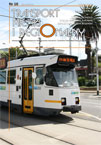 SITK RP
SITK RP 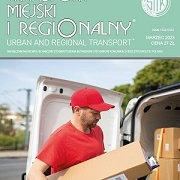 SITKRP
SITKRP 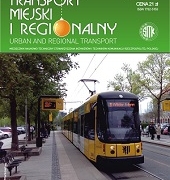
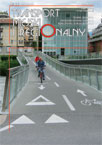 SITK RP
SITK RP 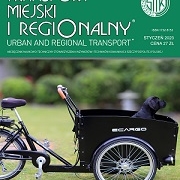 SITK
SITK 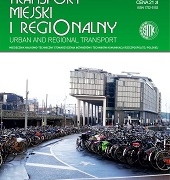

 Wydawnictwa SITK RP
Wydawnictwa SITK RP SITK
SITK